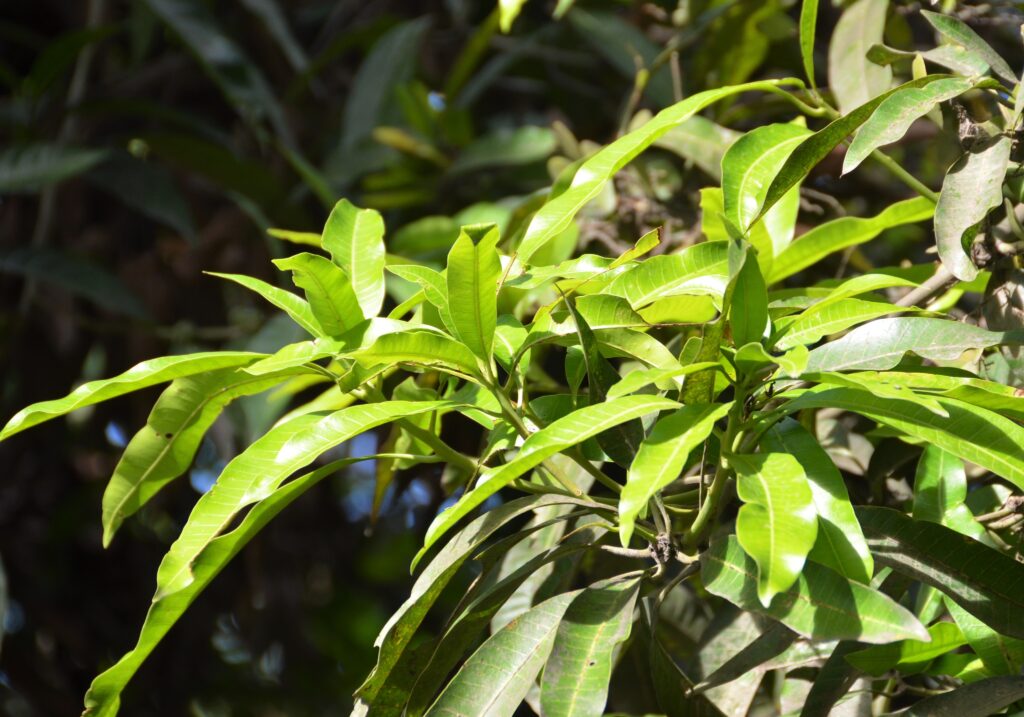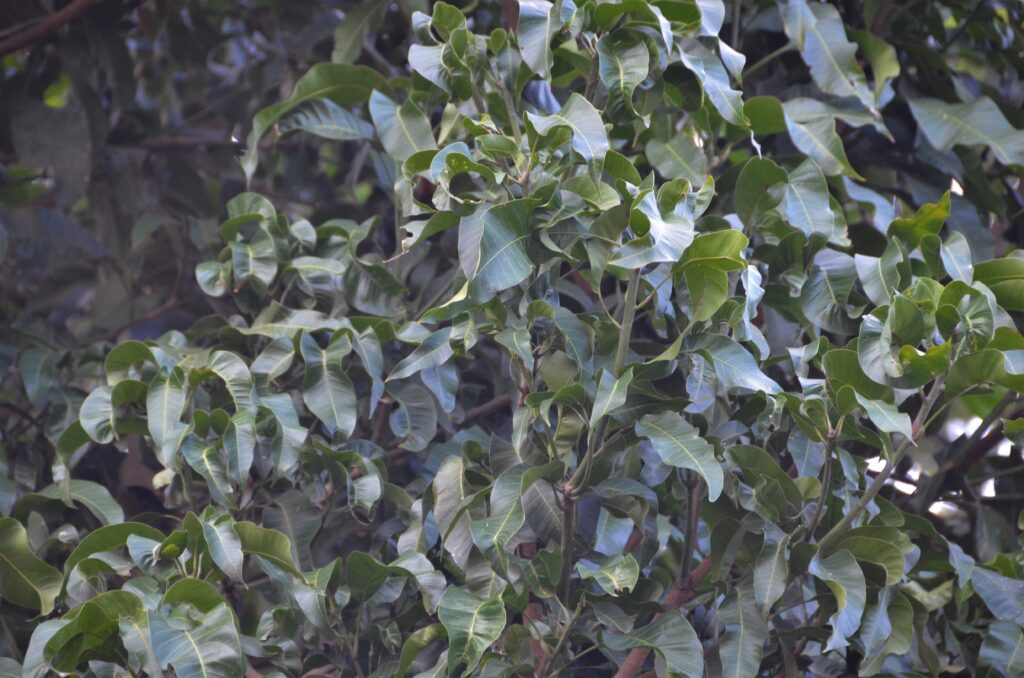Text and Photos by Henrylito D. Tacio
Most Filipinos are familiar with the sweet and luscious mango. After all, it is the country’s fruit icon. Known in the science world as Mangifera indica, it has been cultivated for over 4,000 years.
Mango boasts an impressive nutritional profile. As a matter of fact, several studies have linked mango and its nutrients to health benefits, including immunity, digestive health, and eyesight, as well as a lower risk of certain cancers.
But what most Filipinos are not aware of is that mango leaves are equally as important when it comes to health benefits. As a matter of fact, extracts of the local mango leaves have shown great potential as cosmetic ingredients with good antioxidant, anti-aging, and whitening properties, according to the Philippine Journal of Science in its April 2021 issue.
This was the result of the study conducted by a team of researchers led by Arsenia B. Sapin of the National Institute of Molecular Biology and Biotechnology of the University of the Philippines Los Baños.
While mango has been one of the top three produced and exported crops in the country, most studies centered on the industry profitability, mainly on breeding, fruit production, and processing.
“Unlike in other countries, very few in the Philippines have explored the potential and utilization of the non-fruit parts of the mango, such as the bark and leaves,” Sapin said in a statement circulated by the Department of Science and Technology (DOST).
The research on the “Evaluation of the Bioactivities of Natural Phenolics from Mango (Mangifera indica Linn) Leaves for Cosmetic Industry Applications,” investigated samples of fresh leaves of mango cultivars (carabao, apple mango, pico, sinaging, and sipsipin) collected from San Miguel, Bulacan to explore its possible cosmetic applications.
Studies done on the nutritional value of mango leaves showed they are rich in vitamins like Vitamin C, vitamin A, and vitamin B. It also contains other compounds like steroids, alkaloids, riboflavin, thiamin, phenolic, beta-carotene, and flavonoids, among others.
Mango leaves likewise contain several beneficial plant compounds, including polyphenols. Mangiferin, a polyphenol found in many plants but in especially high amounts in mango and mango leaves.
Sapin’s team looked for the presence of polyphenolic compounds in the local mango leaves, along with the antioxidant capacity and inhibitory effect against elastase and tyrosinase – enzymes which cause aging and darkening of the skin.
Outside the Philippines, mango leaves have proven its application in food, pharmaceuticals, and cosmetics. In fact, there has been an approved patent, such as that of Loreal’s, on the extraction and application of polyphenols from mango leaves.
Among the interesting findings of the study were as follows:
· In terms of skin whitening extracts from young leaves of pico and carabao varieties were most potent in inhibiting tyrosinase, the skin darkening enzyme. On the other hand, among the extracts from the mature leaves, the apple mango exhibited the greatest potency. While these extracts are better whitening agents than the ascorbic acid, such is not the case with kojic acid.
· In terms of anti-aging, extract from apple mango leaves was the most potent elastase (enzyme for aging) inhibitor, which was about two times to four times more potent than the other extracts. Compared with the standard tocopherol (Vitamin E compound commonly found in nuts, oil, and vegetables), the mango leaf extracts were probably ten times more effective.
“The results of this study could provide consumers with effective nature-based ingredients for safer cosmetic products, and for healthier and beautiful skin, as an alternative to the synthetic ones available in the market,” Sapin said.
In India, some studies report that mango leaves have nutrients that are essential for skin health. “Mango leaf extract may reduce the fine lines, aging signs, and dryness of the skin,” the website pharmeasy.in reports. “It also helps in collagen production that may reduce the wrinkles and fine lines from the face.”
But there’s more to mango leaves than just skin whitening and anti-aging properties. After all, the leaves of mango have been used in healing practices like Ayurveda and traditional Chinese medicine for thousands of years.
For one, mango leaves contain some hypotensive properties. This means it can help reduce blood pressure.
Mango leaves are also good for people with diabetes. “They are excellent in balancing blood sugar level in diabetic patients,” pharmeasy.in states. “Those leaves contain tannins called anthocyanins that may help in treating early diabetes. It also contains 3beta taraxerol and ethyl acetate, which help treat hyperglycemia (increased blood sugar levels).”
A study was conducted on rodents. After two weeks of giving mango leaf extract to mice, significantly lower triglyceride and blood sugar levels were observed.
“A study in rats found that administering 45 milligrams per pound of the body weight (one milligrams per kilogram) of mango leaf extract reduced hyperlipidemia, a condition marked by unusually high levels of triglycerides and cholesterol,” writes healthline.com’s Cecilia Snyder.
“In a study that compared mango leaf extract and the oral diabetes drug glibenclamide in rats with diabetes, those given the extract had significantly lower blood sugar levels than the glibenclamide group after two weeks,” Snyder says.
In treating wounds, mango leaves are also excellent. Researchers from the Our Lady of Fatima University conducted a study to evaluate the effects of mango leaf crude extract on wound healing of some species of rats.
“The extracts have successfully decreased the wound size of the experimental control group,” the researchers reported.
The significant decrease in wound size was attributed to tannins, phytochemicals that can facilitate the process of wound healing by increasing collagen formation and growth of epithelial tissues in damaged areas of the skin, the study contended.
Mangoes are grown by around two and a half million smallholder farmers on over 7 million mango trees, according to the Department of Agriculture. Compared to other crops grown in the country like rice, corn, coconut, and sugarcane, mangoes are a high-value crop and provide a huge boost to the rural and national economy.



